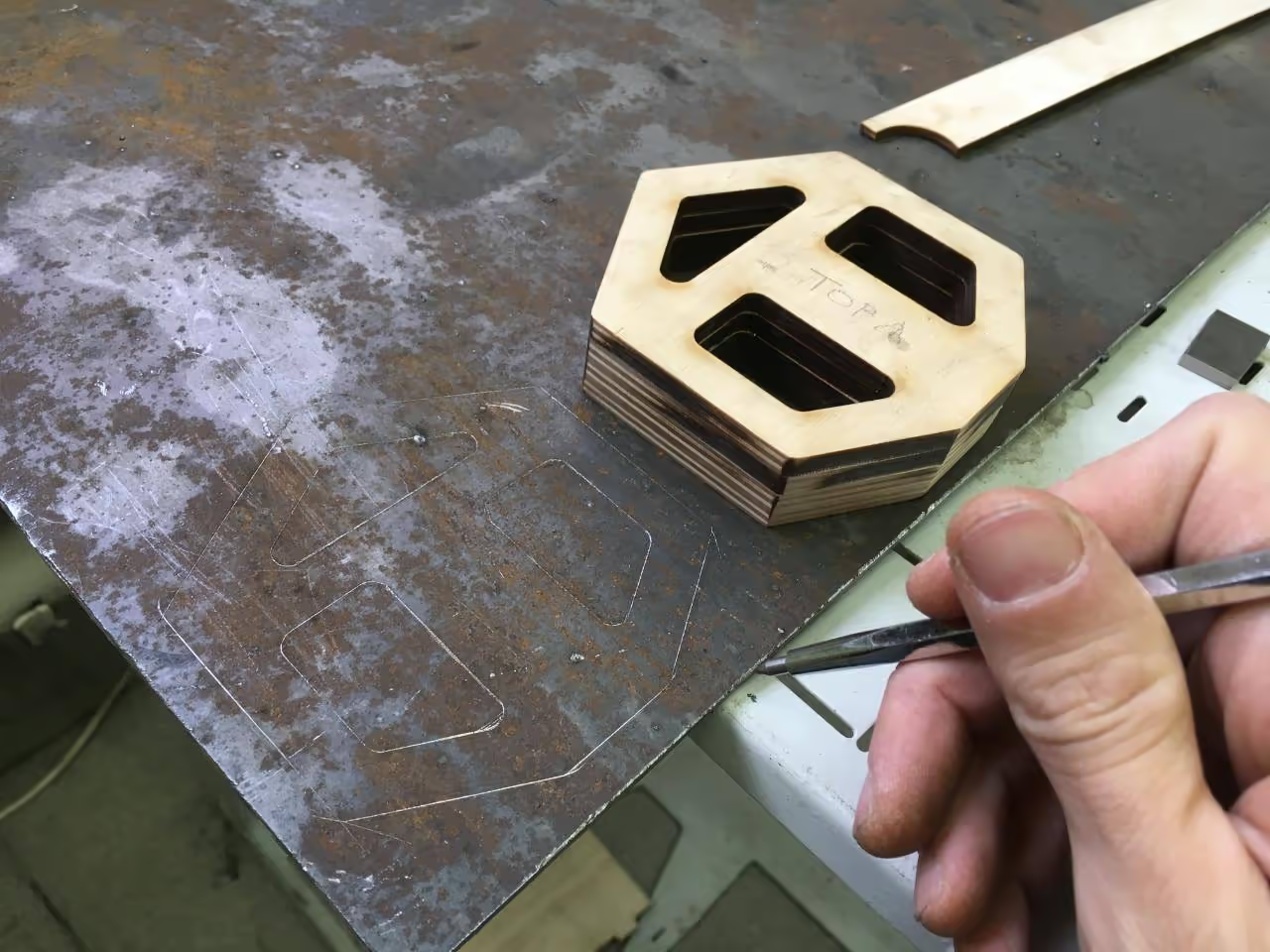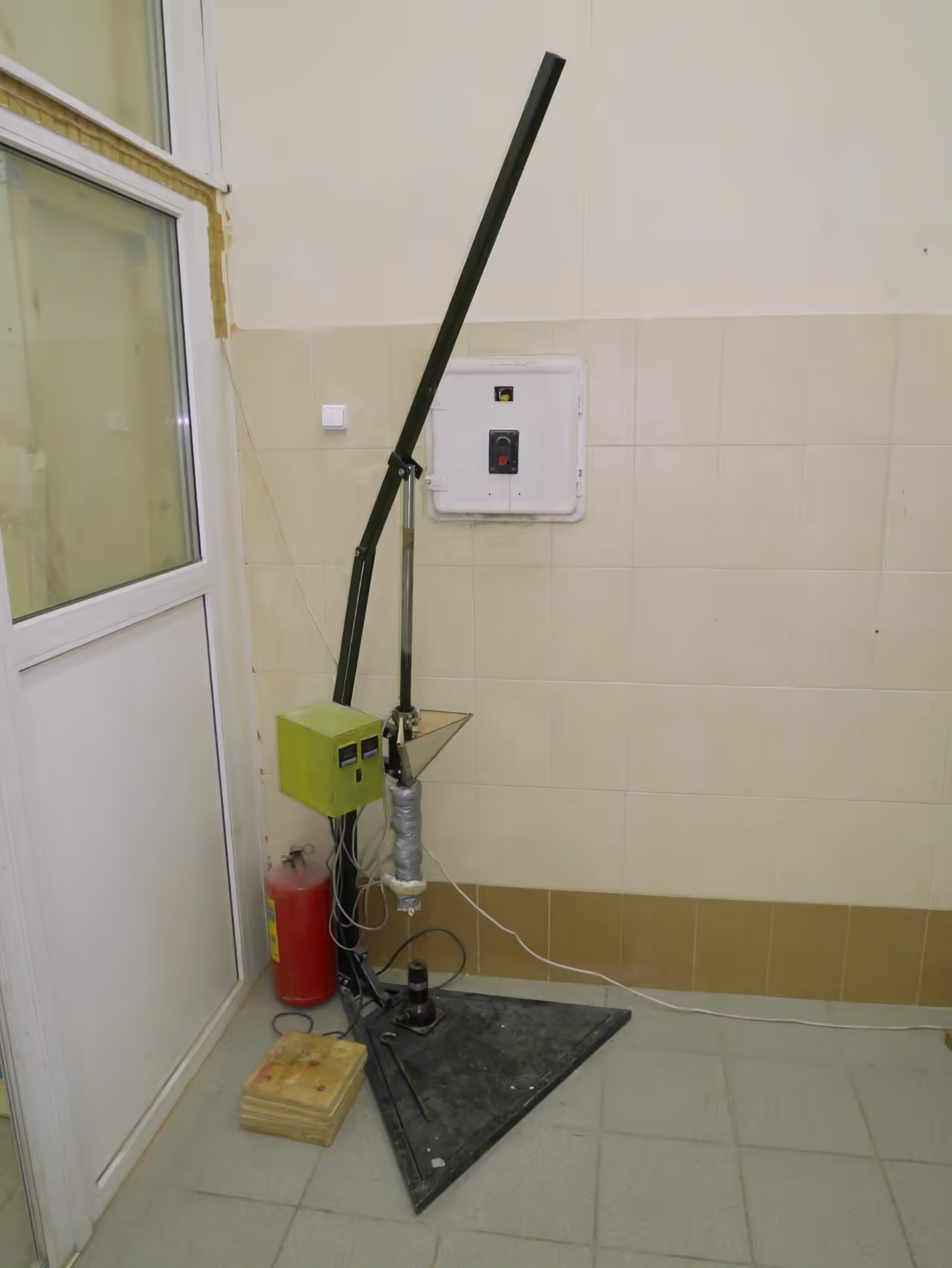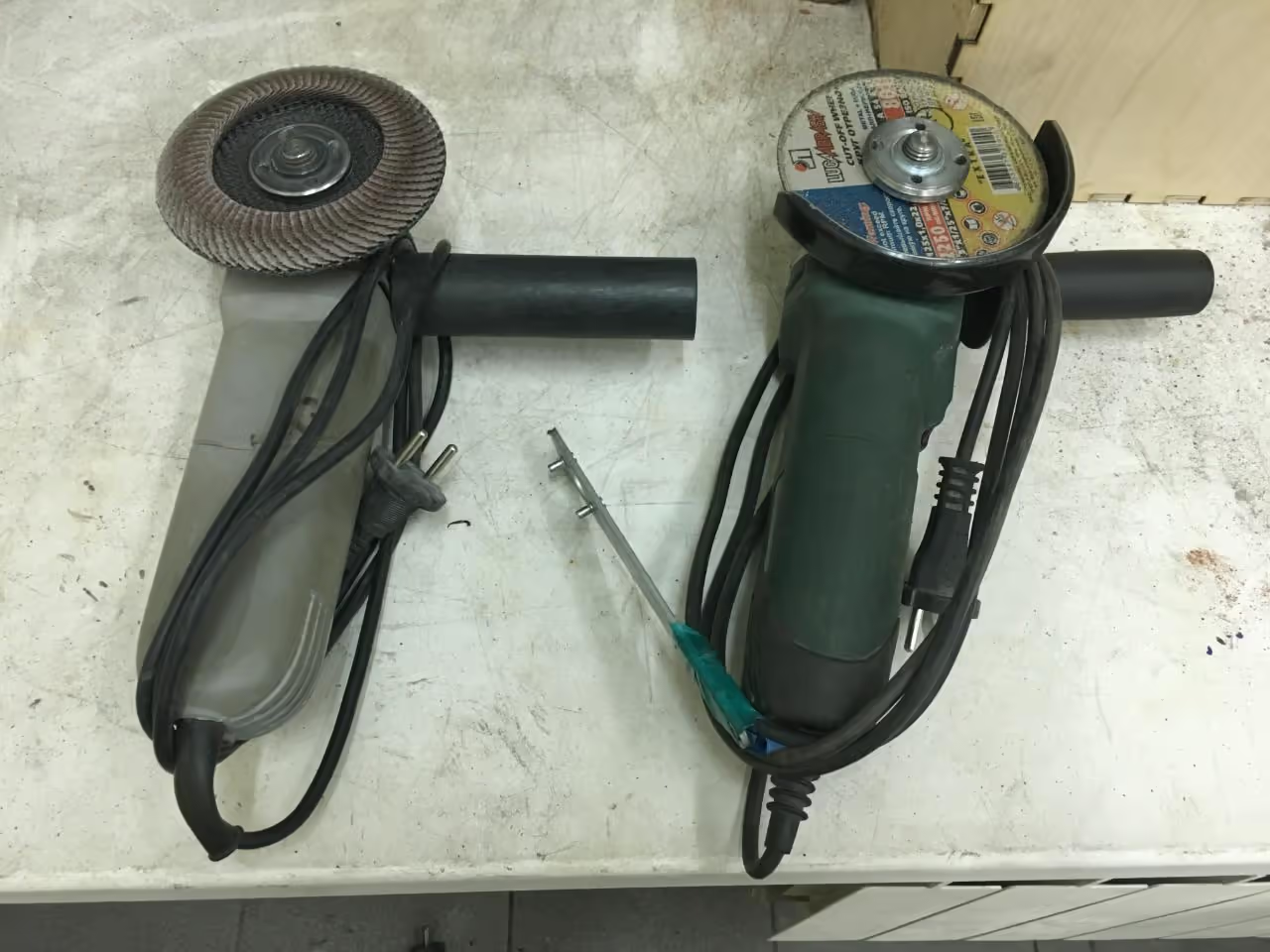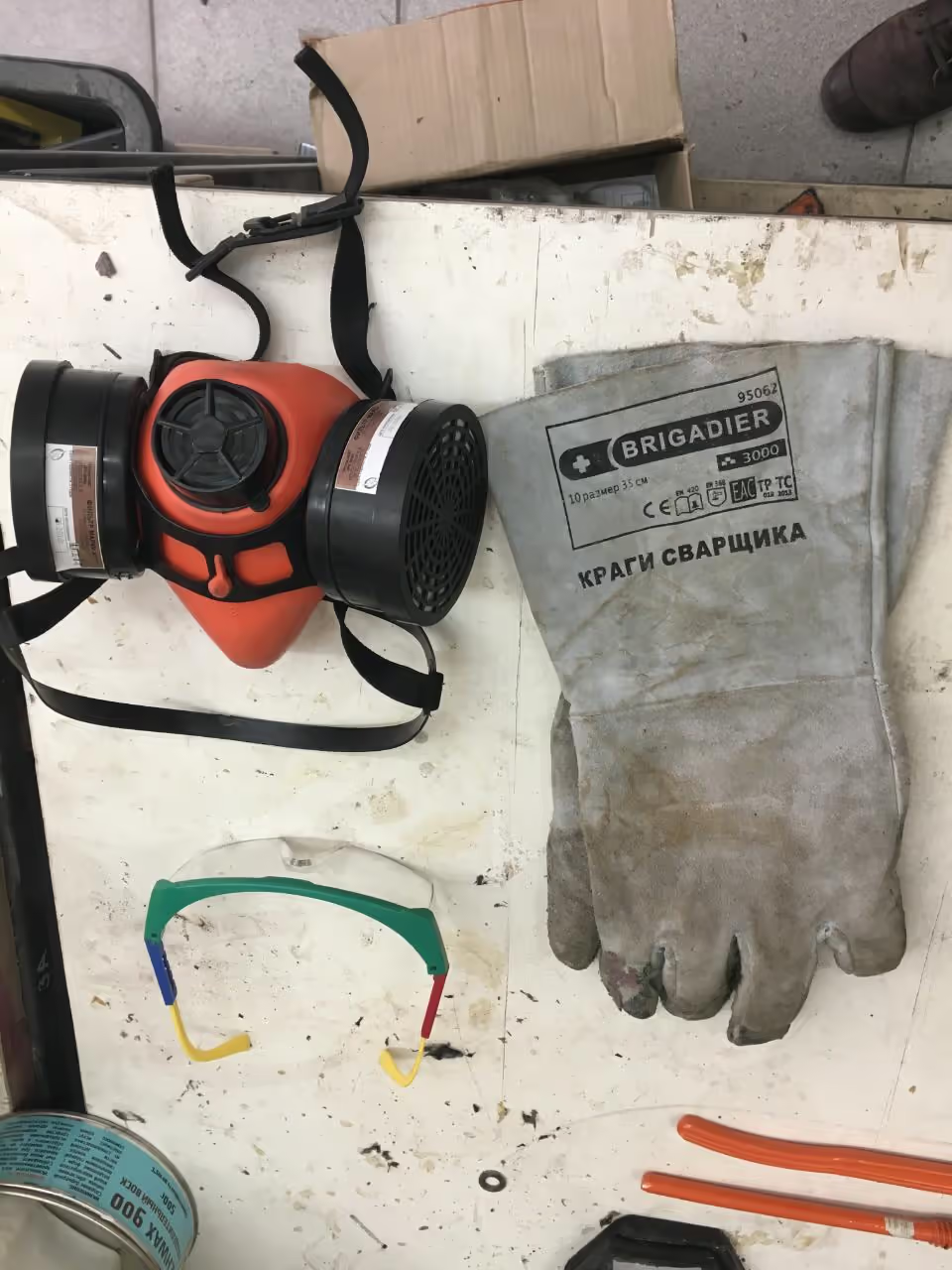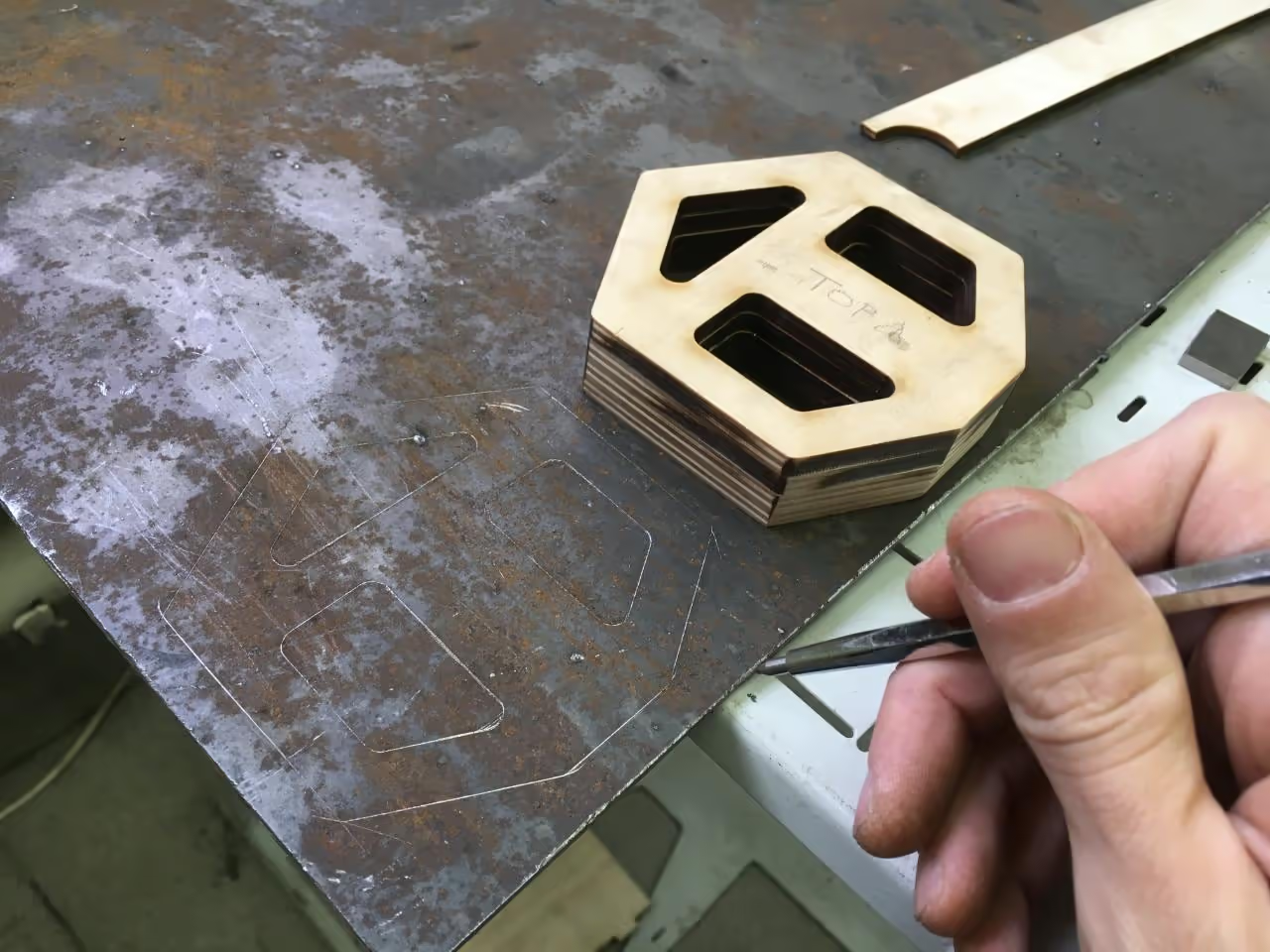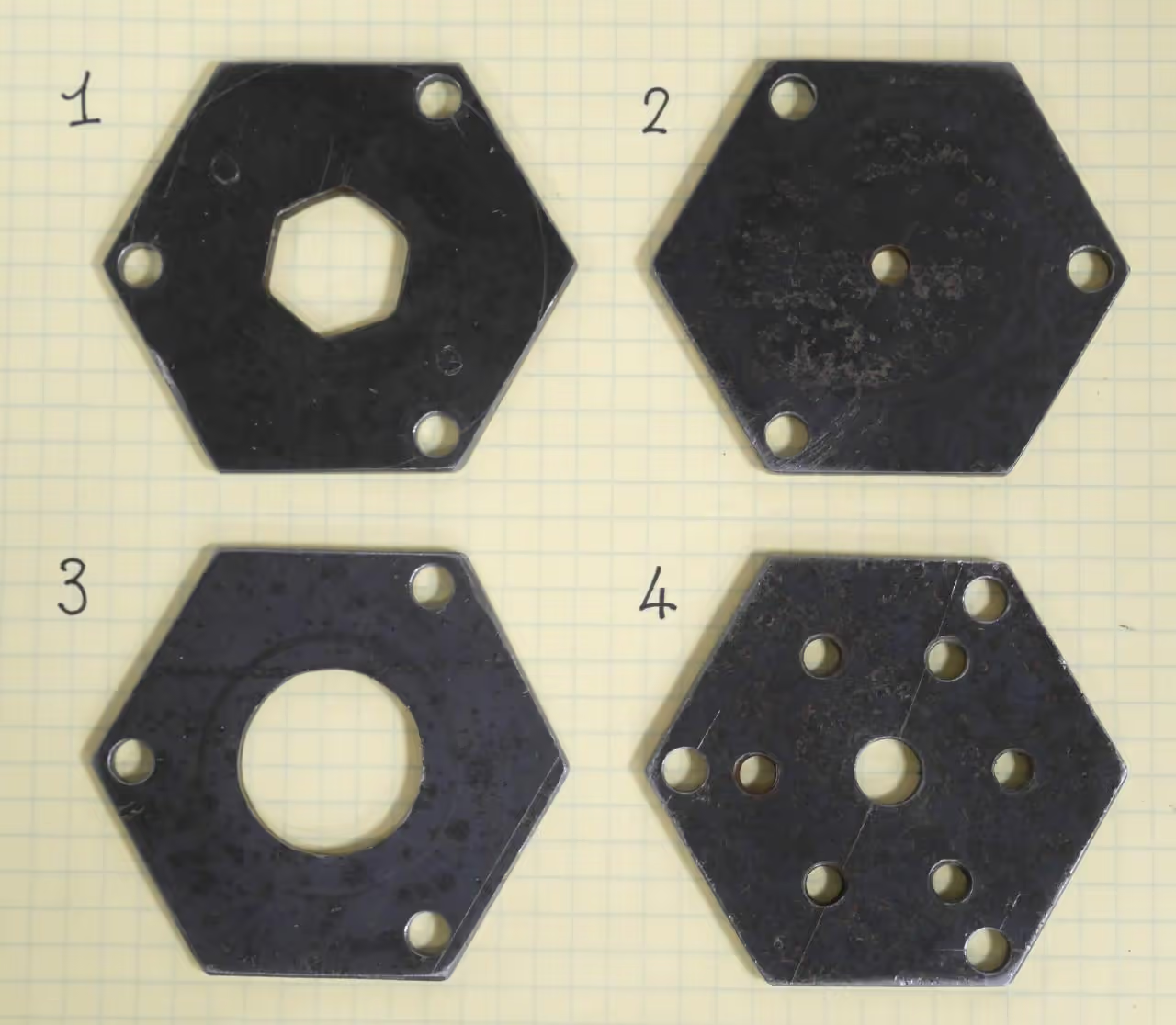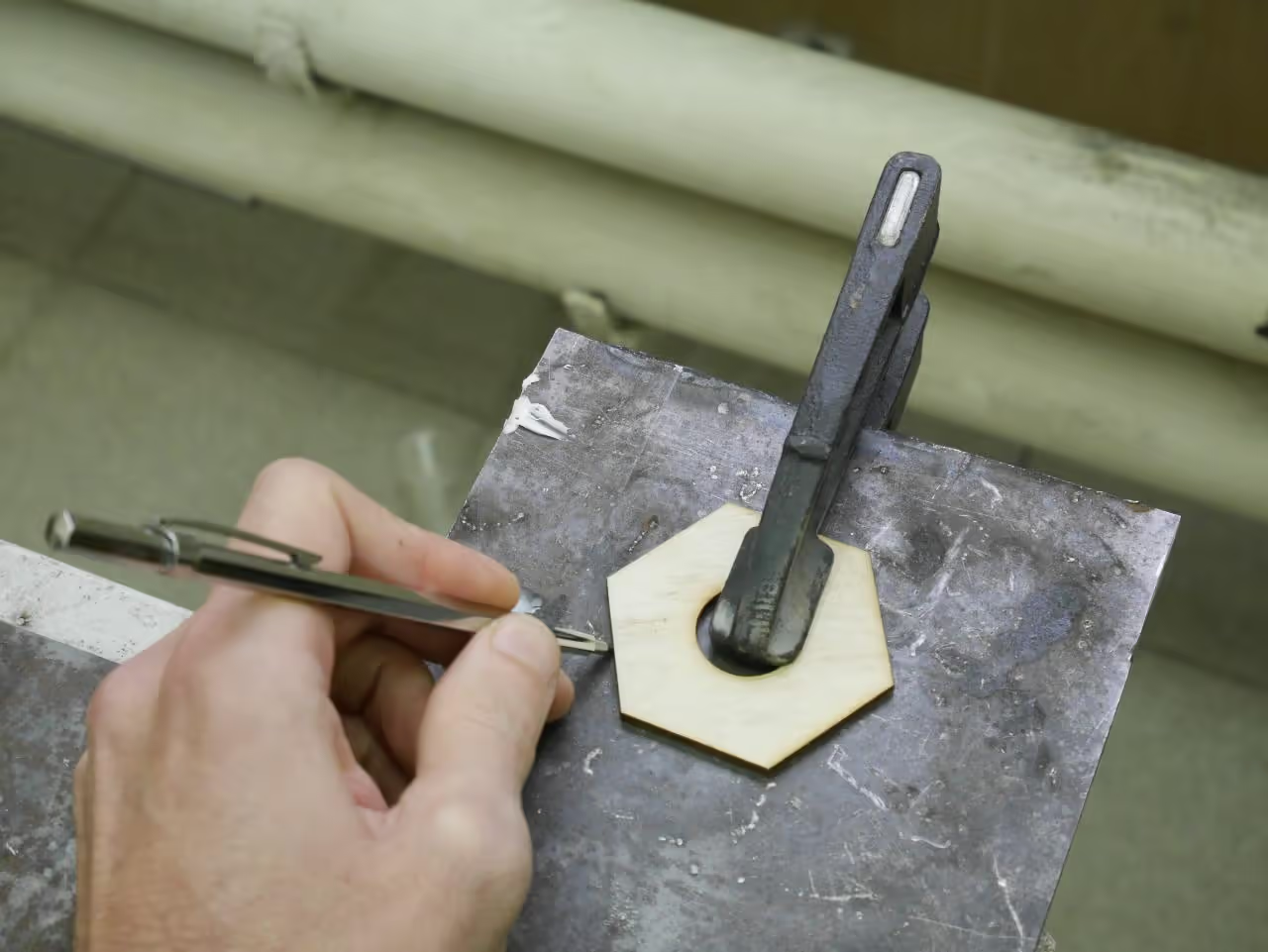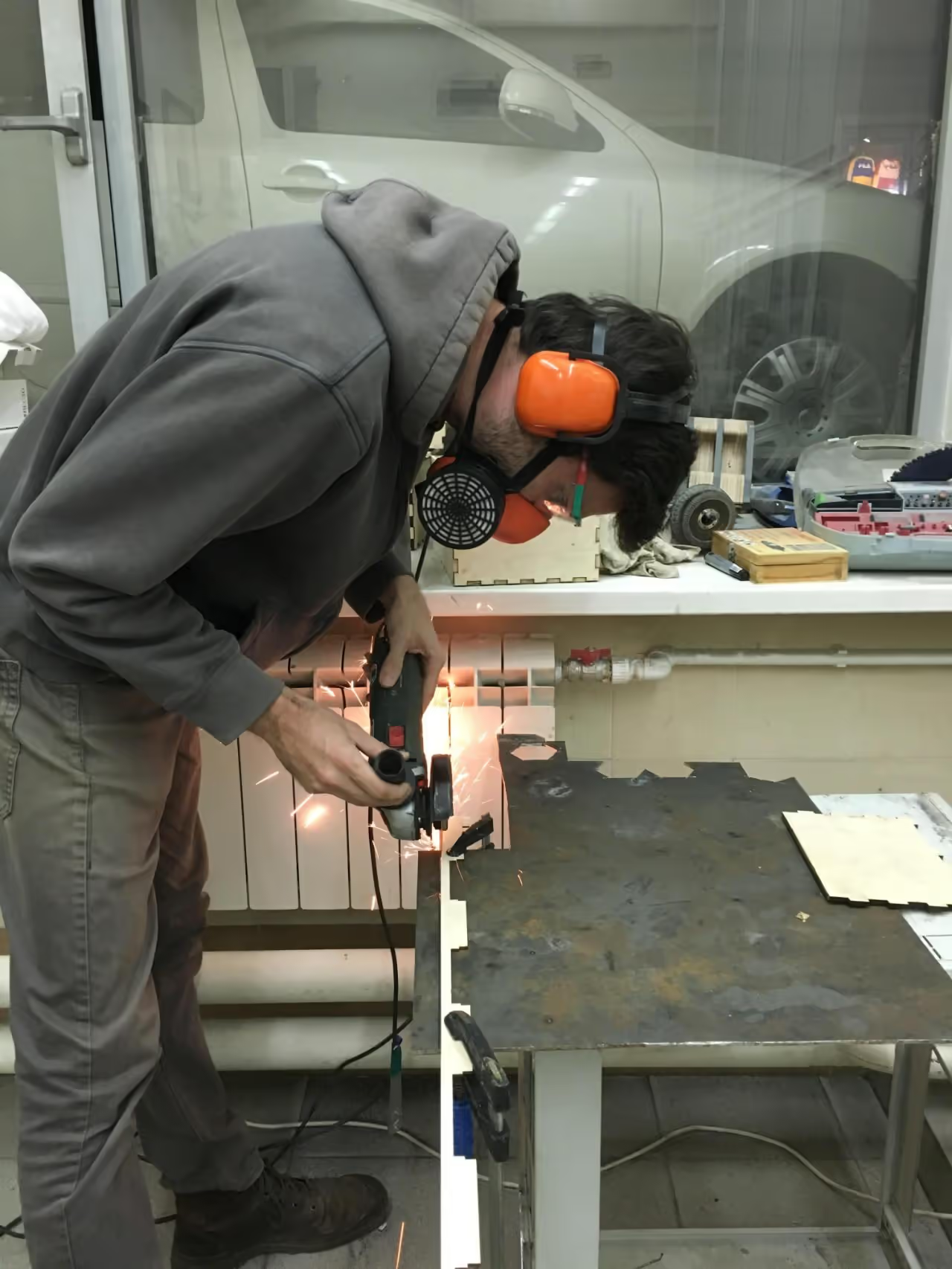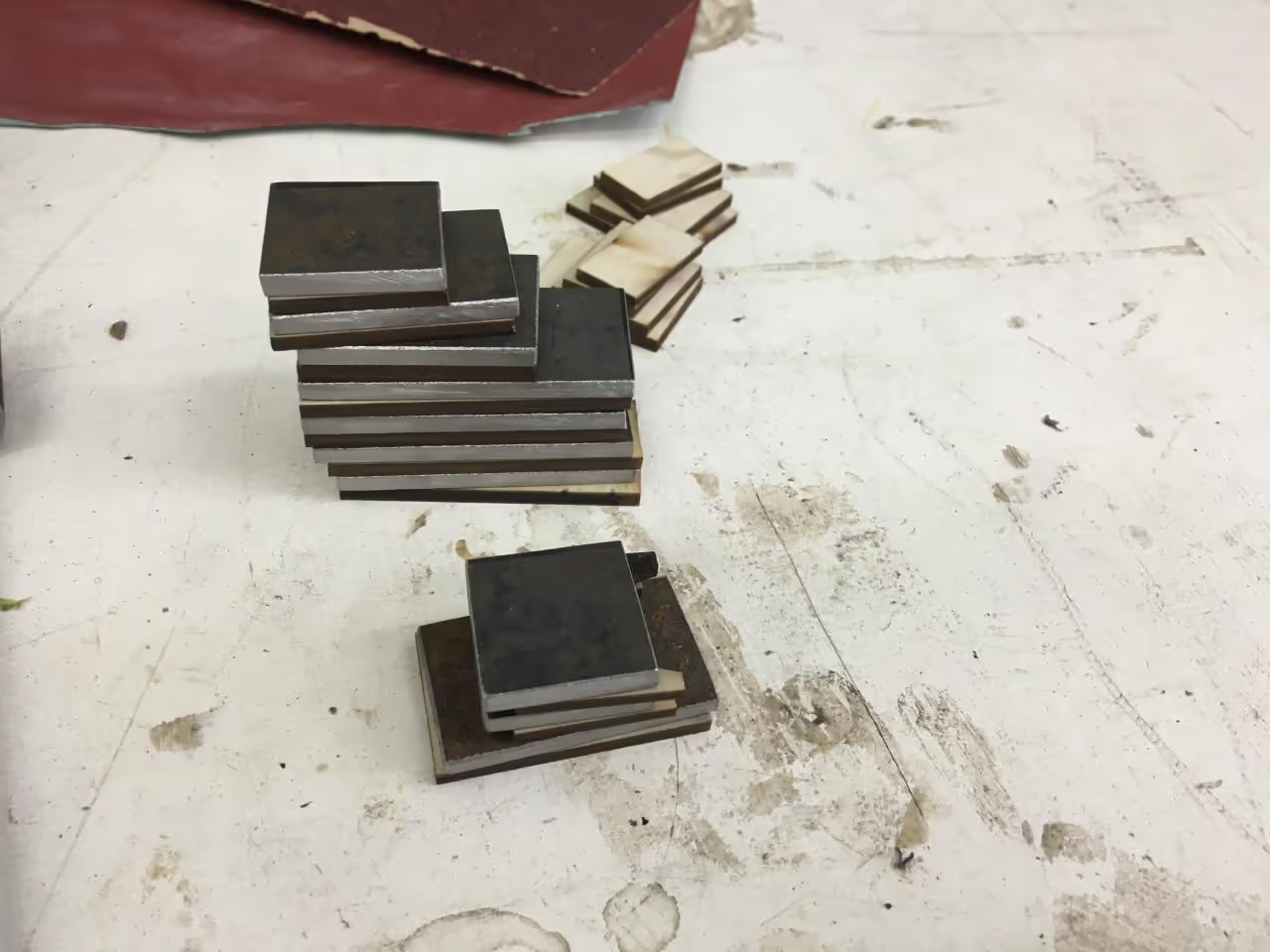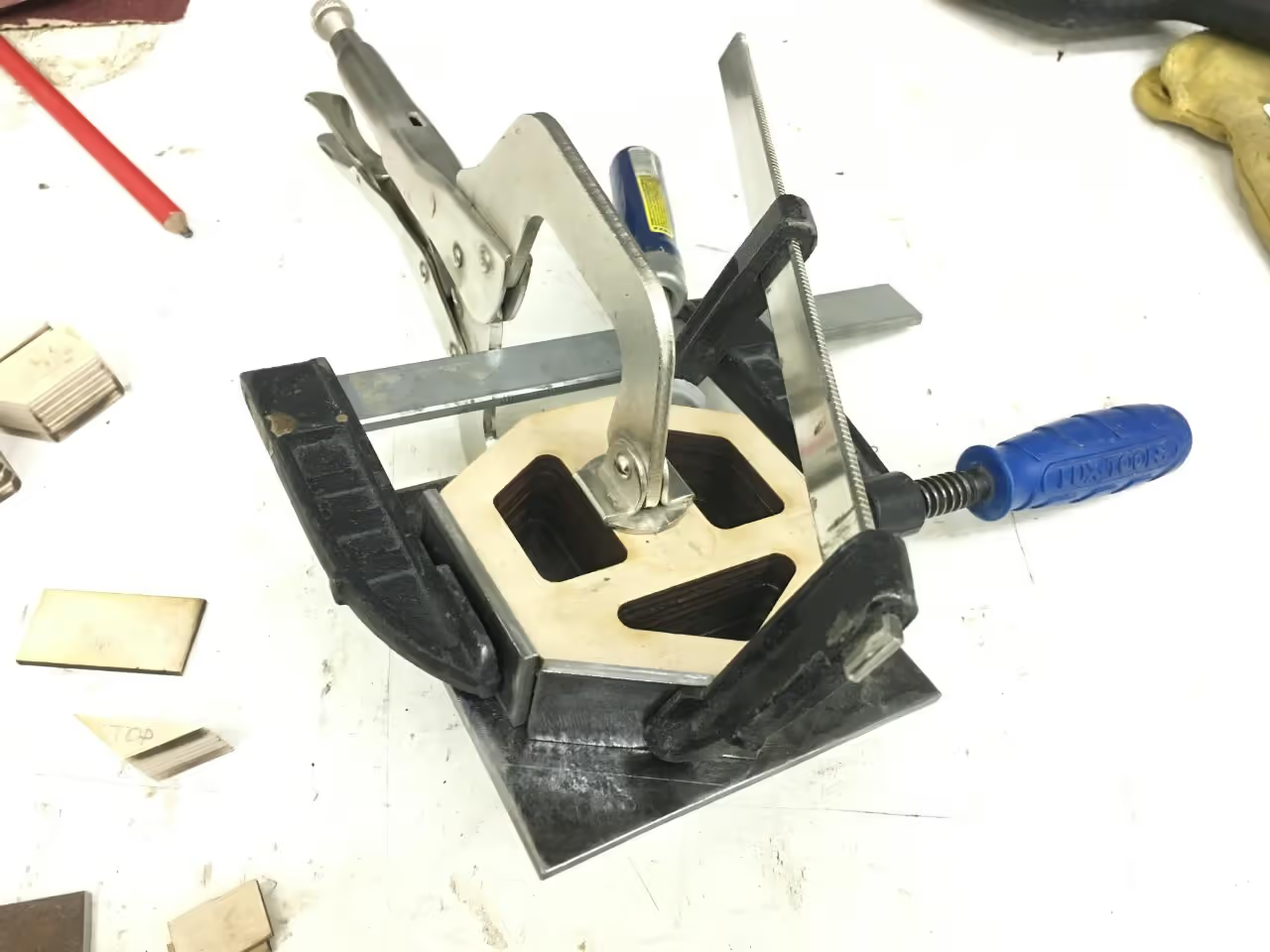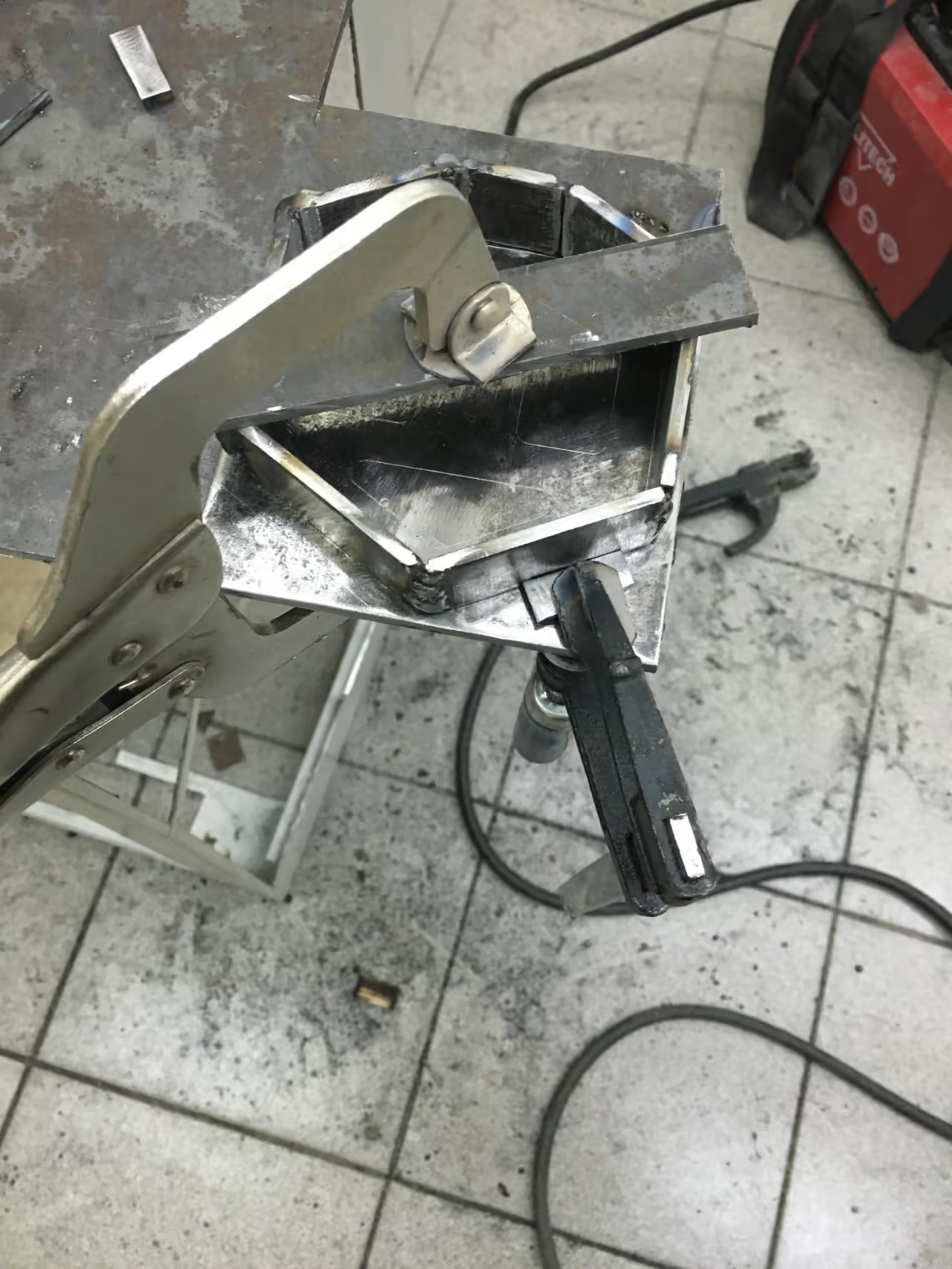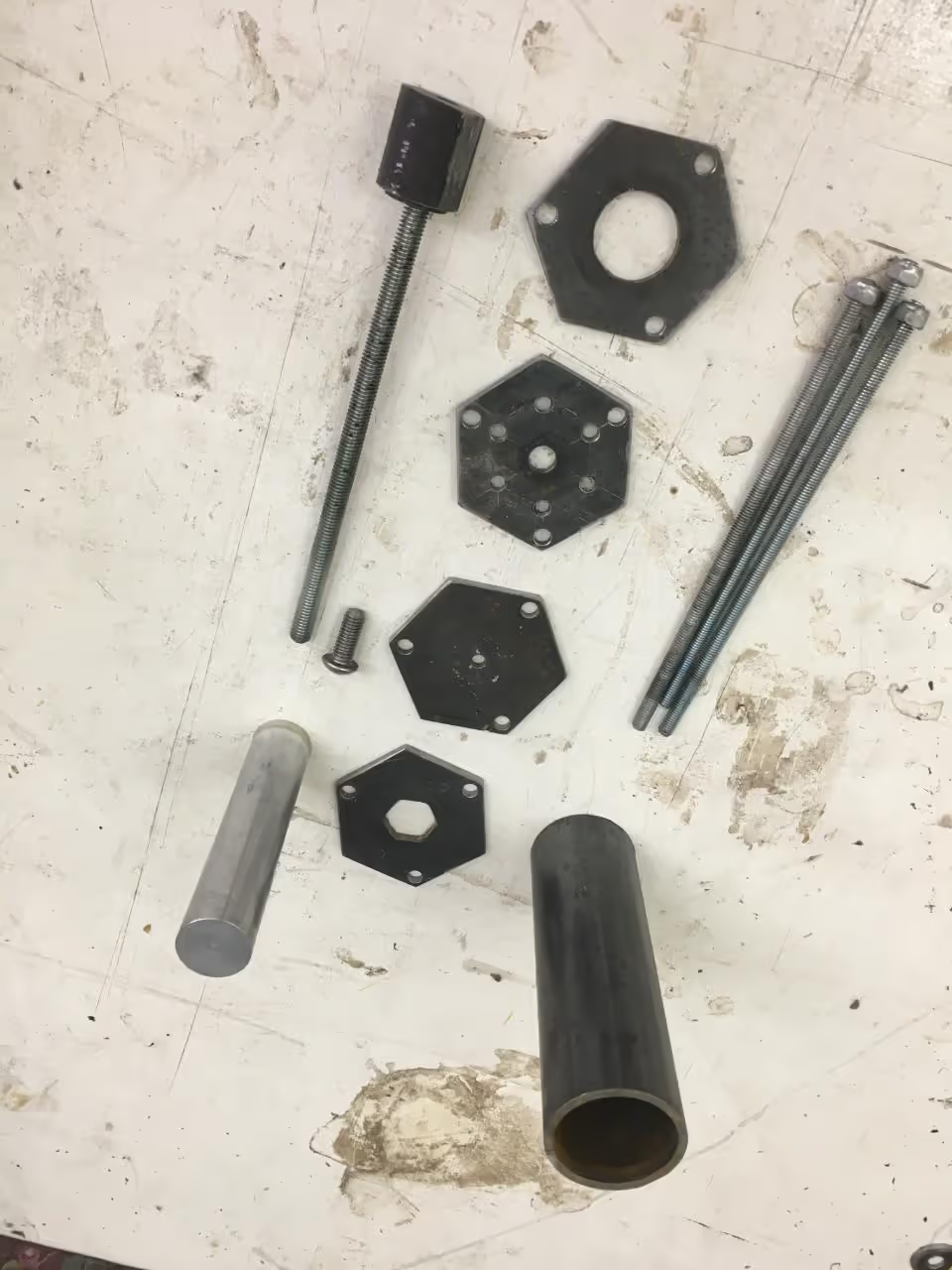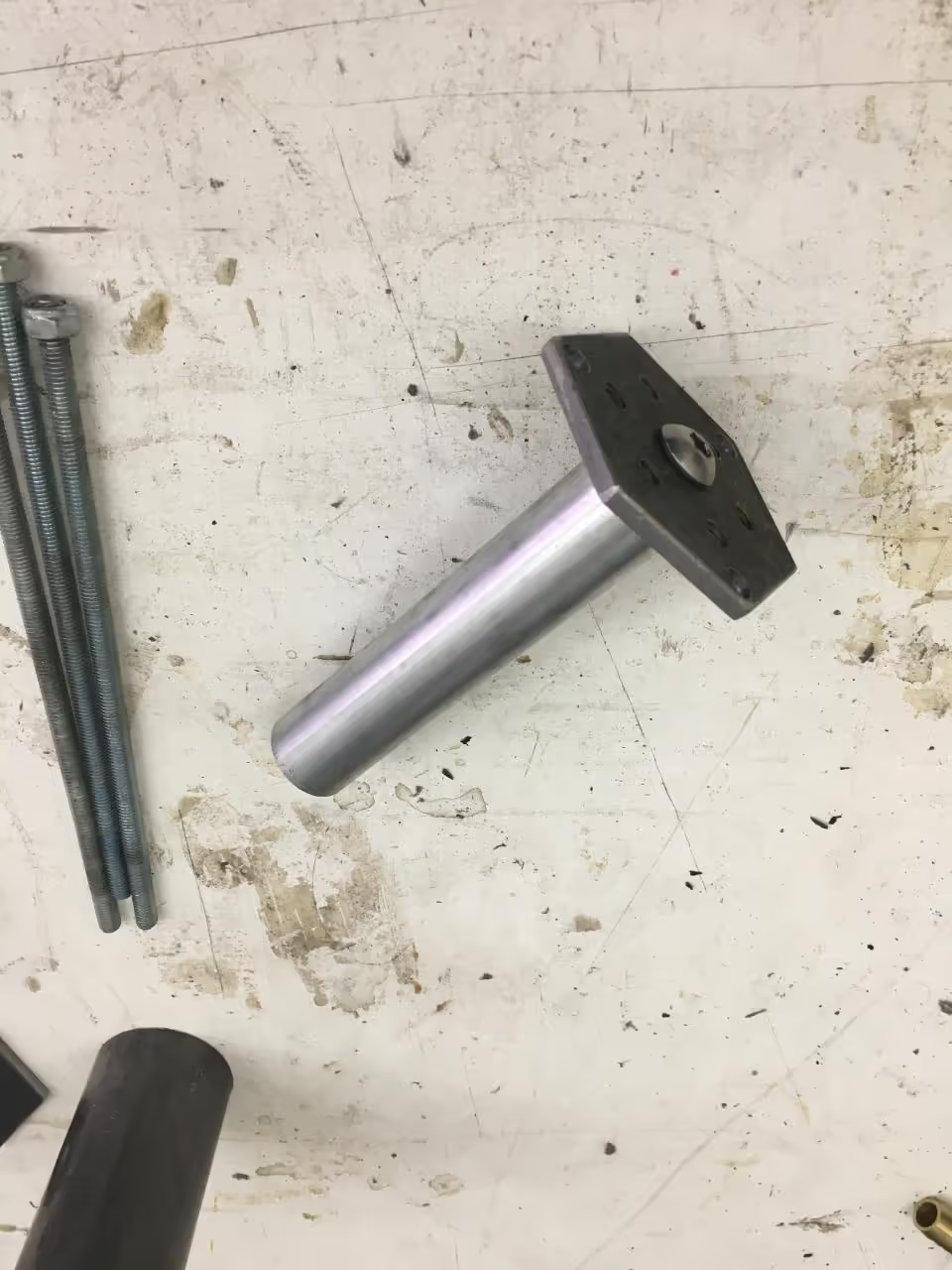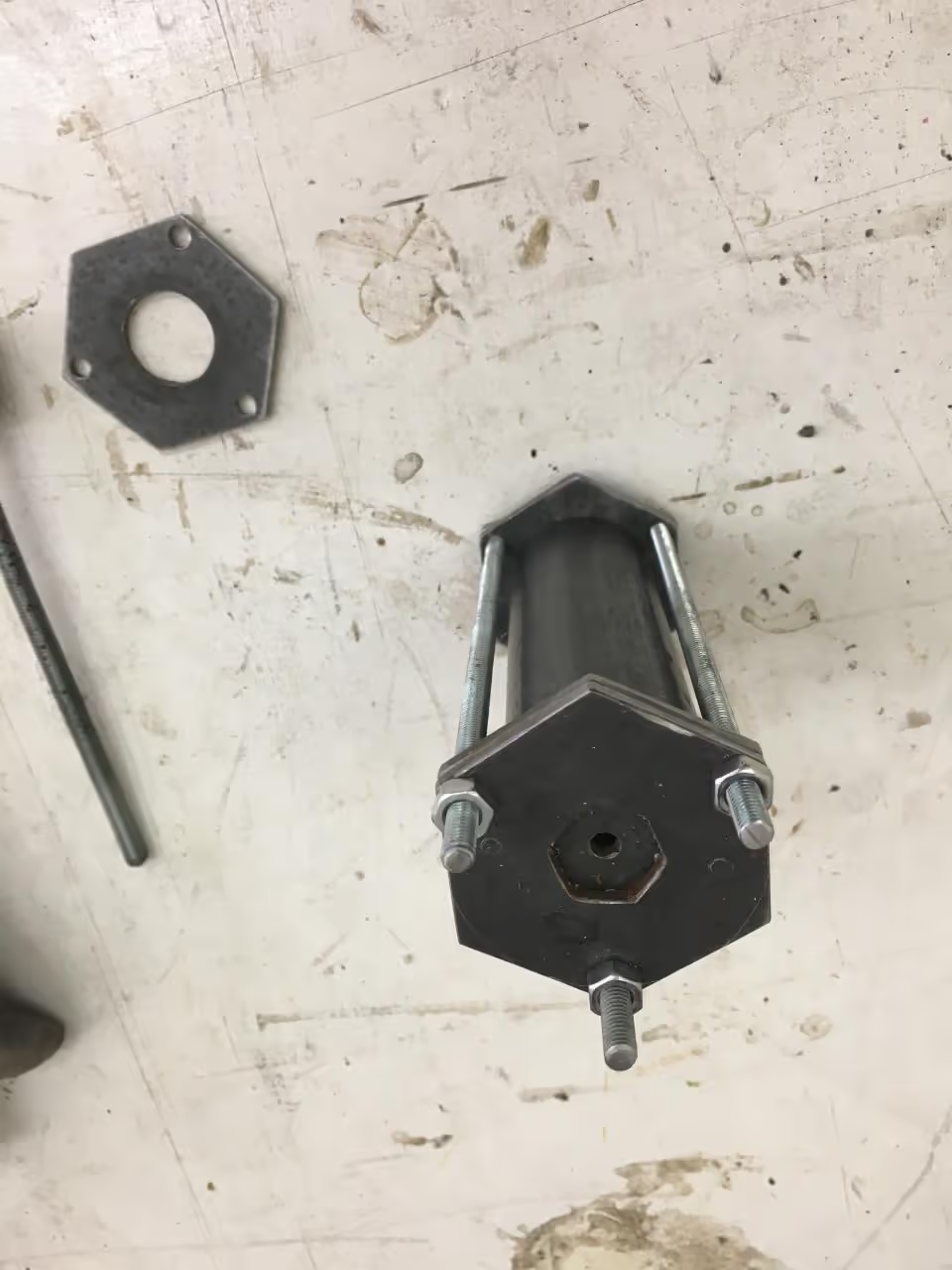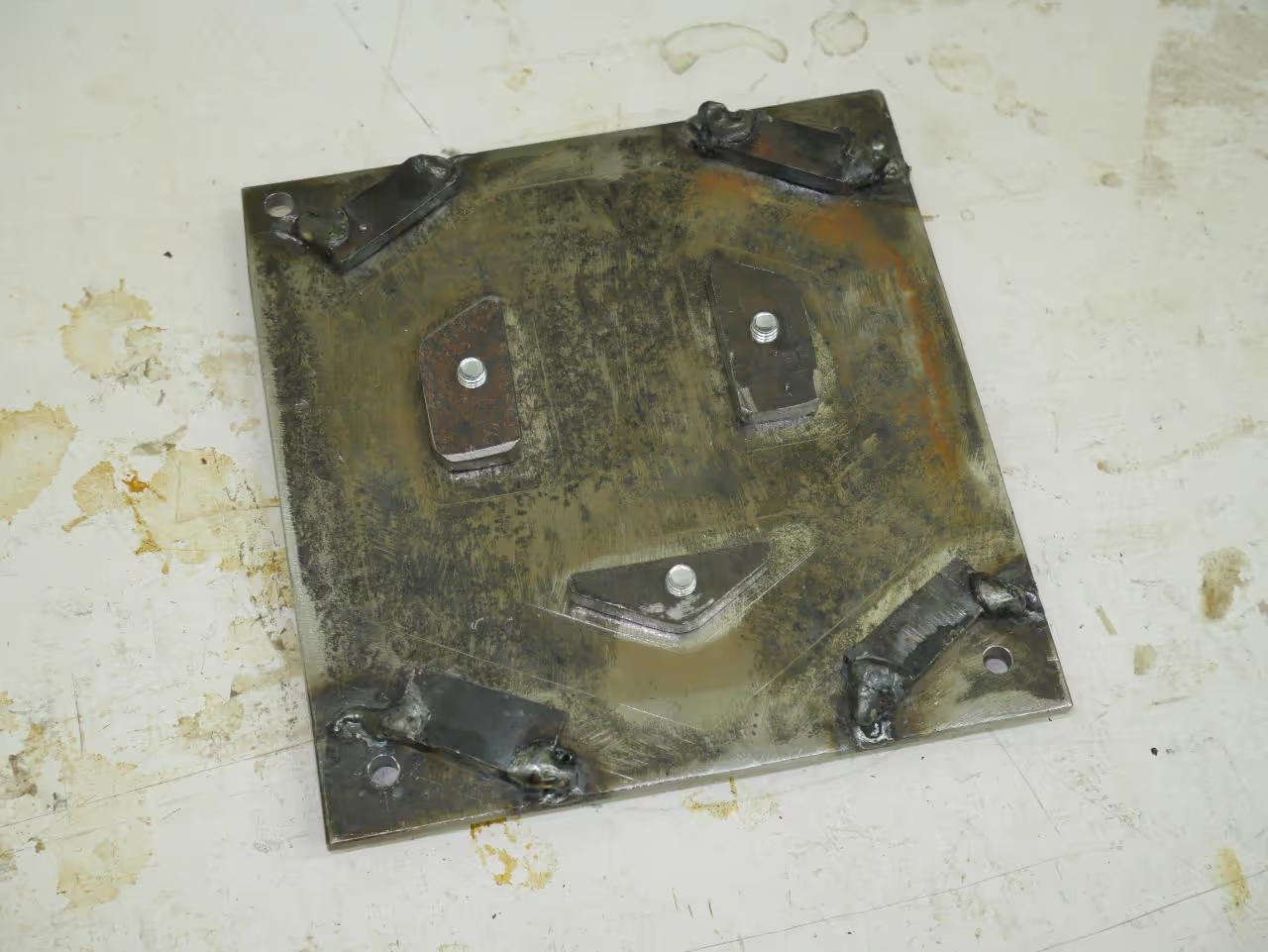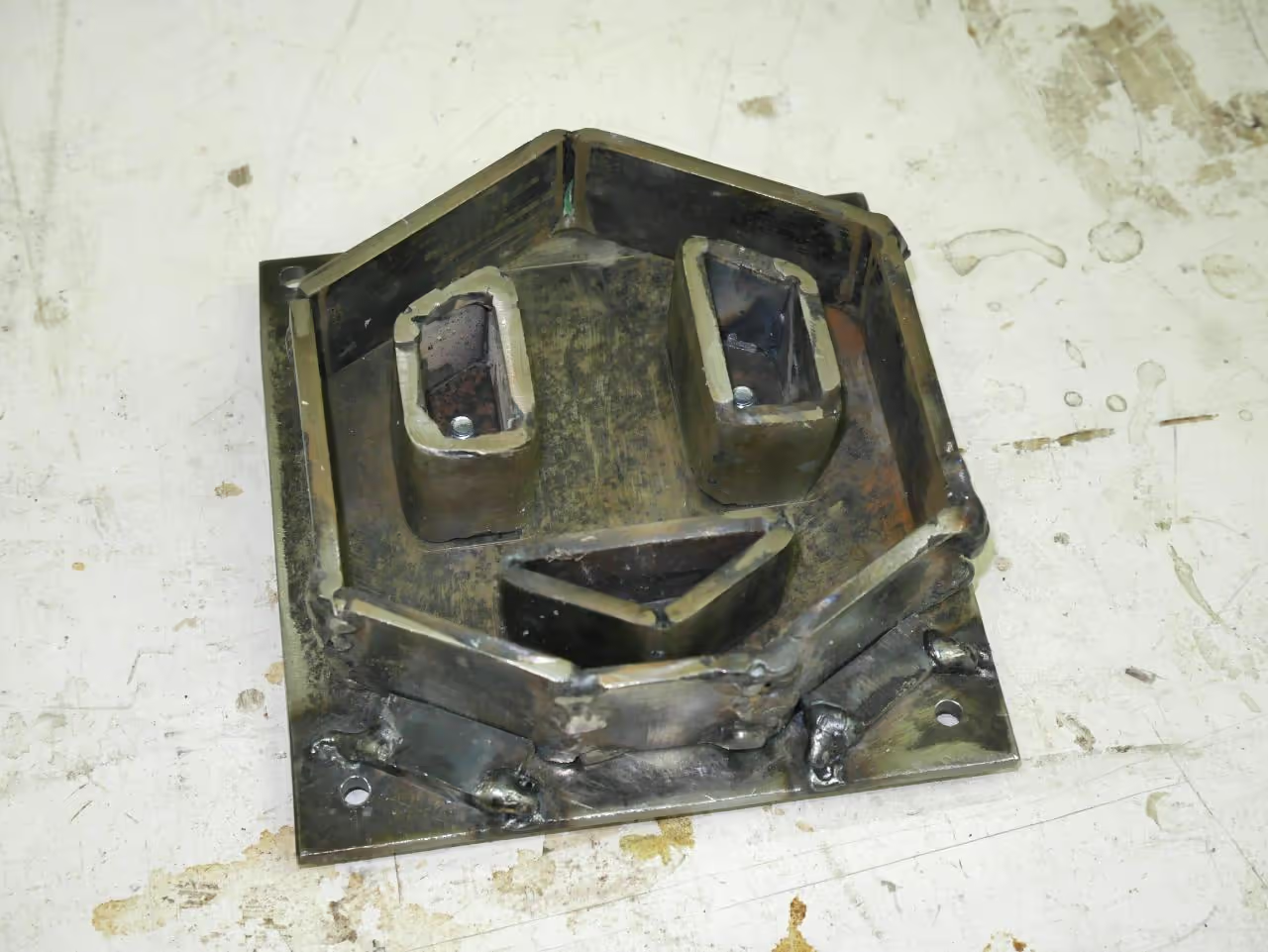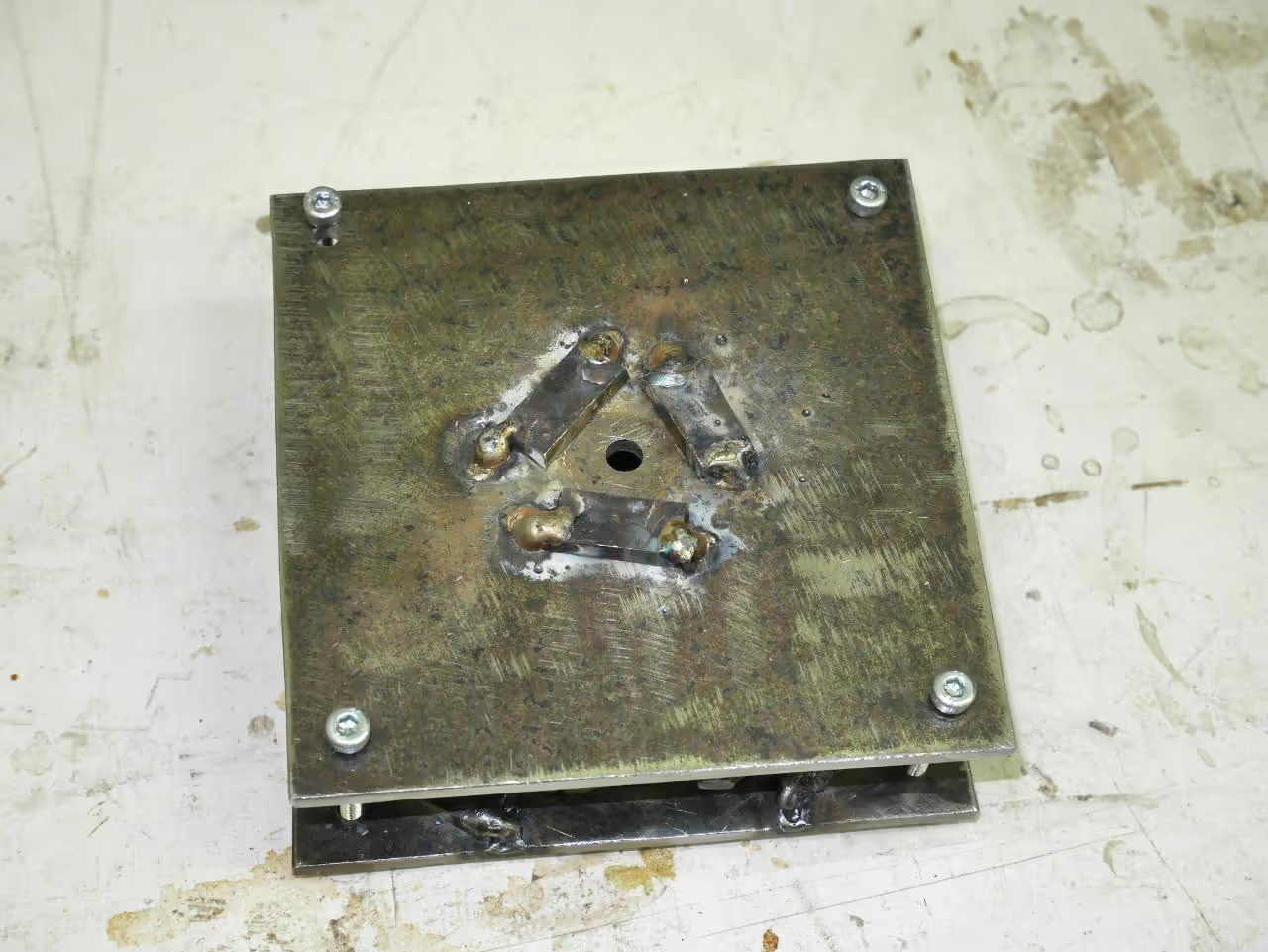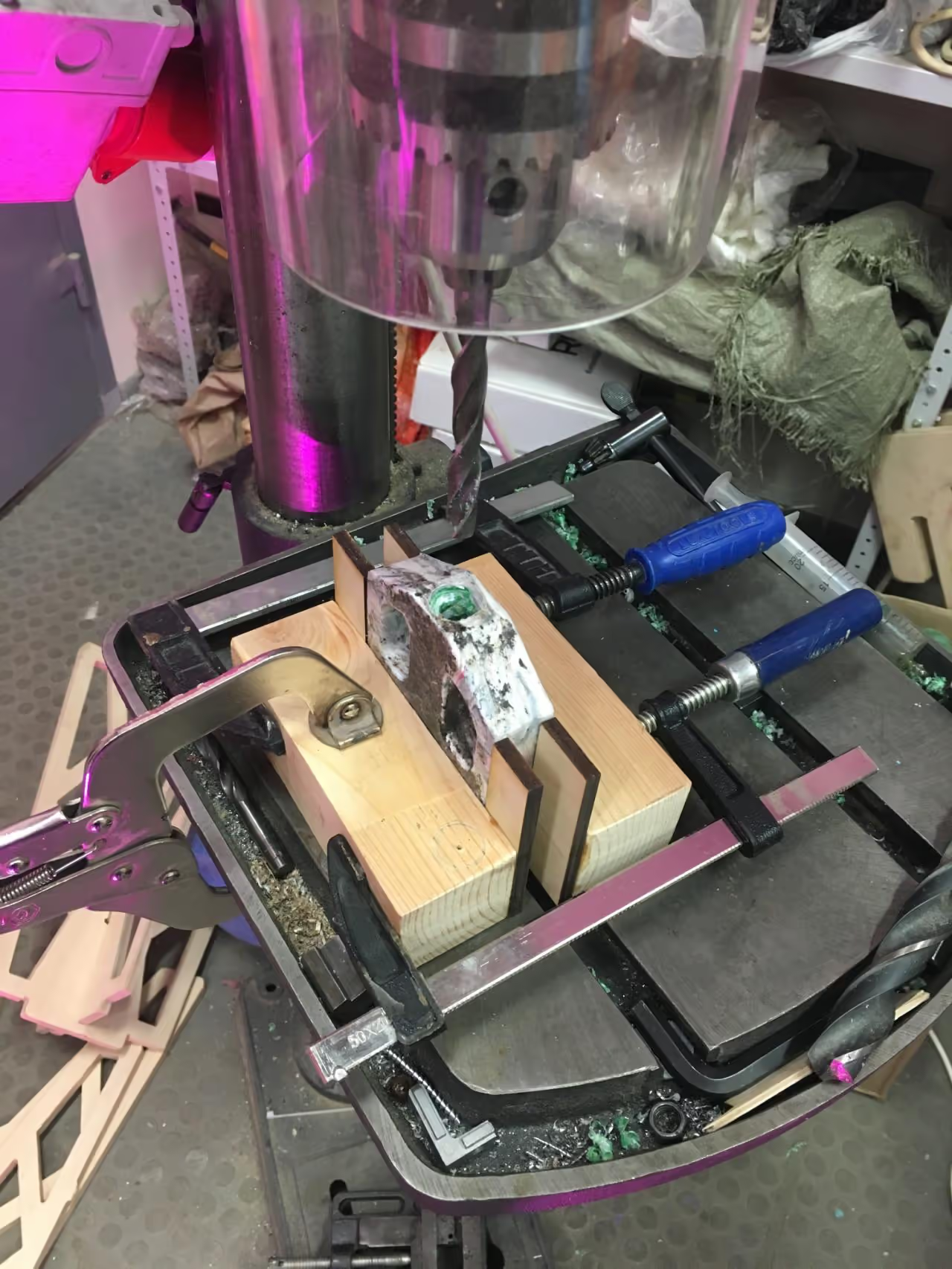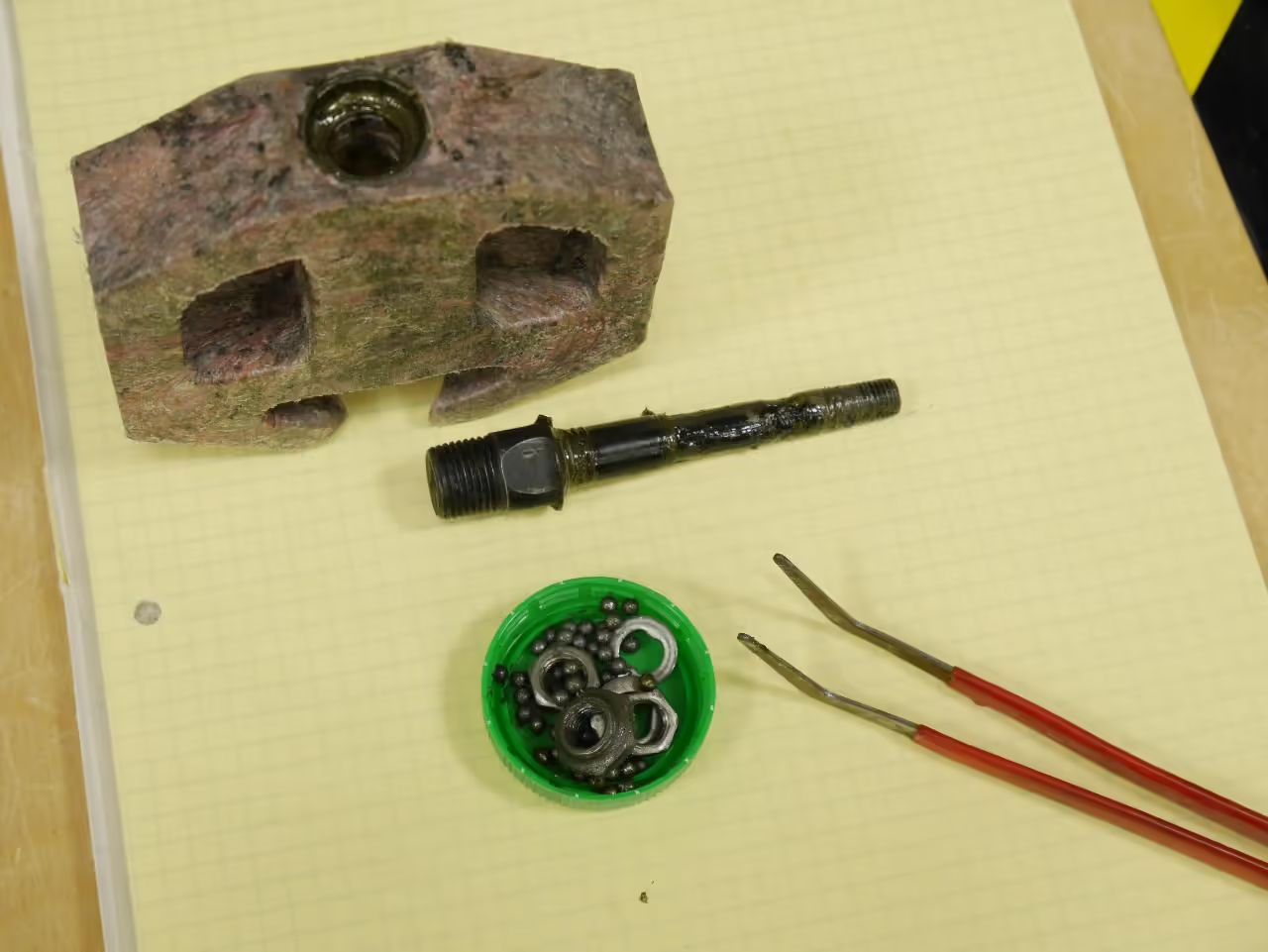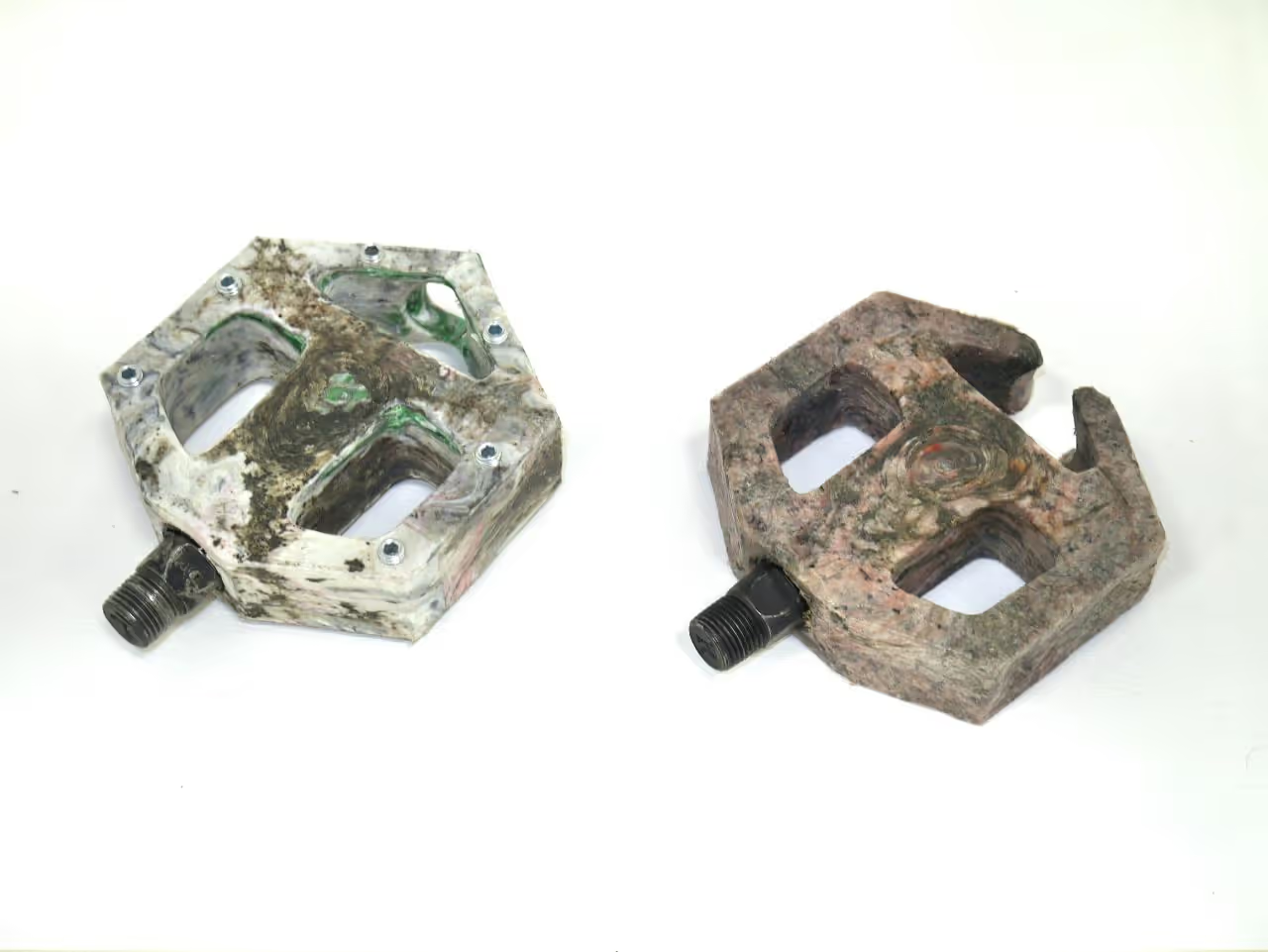How-To: Mold Creation
This tutorial explains how I created the mold. While injecting the pedal is quick, fabricating the mold requires significant time. Milling the mold is recommended if feasible, as welding is time-intensive. The 3D model is available for download to customize your own version.
Table of Contents
- 1Tools
- Injection machine
- Angle grinder (cutting and grinding discs)
- Vise
- Flat file, round file (optional: small rotary tool like a Proxxon or Dremel)
- Drill press
- Clamps (at least 3)
- Welding machine (for pedals) and welding attire
- Radius scriber (or a marker)
- Safety glasses
- Respirator with A1 P1 filter
- Safety gloves
- Ear protection
- Sandpaper (grit around 80) (optional: electric sander)
- Measuring tape
- Square edge
- M6, M8 thread tap
- Drill bit sizes: 4.3 mm (3/16 in), 6.4 mm (1/4 in), 6.8 mm (17/64 in), 8.4 mm (21/64 in), 11 mm (7/16 in), 20 mm (25/32 in), 22.5 mm (7/8 in) (substitute with round file if 22.5 mm unavailable)
- Tweezers (optional, for ball bearings assembly)
-
Plastic materials: Experiments were conducted with polystyrene (PS) and polyethylene (PE). PS appears stronger, but due to the availability of only black PS, PE was used for the presented objects. The pedal has a volume of 8.85 in³ (145 cm³), and the grip is 5.13 in³ (84 cm³).
Components for Grips:
- Metal Tube: Internal diameter should match the desired grip size; larger diameters offer better comfort. Selected diameter: 1.38 in (35 mm). Length should match desired grip length minus 0.12 in (3 mm). Example: For two grips of 5.12 in (130 mm) each, actual length is 5 in (127 mm).
- Metal Sheet: Steel, 0.16 in (4 mm) thick; dimensions 7.09 x 2.36 in (180 x 60 mm).
- Threaded Rod: M6 x 17.72 in (450 mm); M8 x 5.91 in (150 mm).
- Nuts: 6 units, M6.
- Metal Cylinder: Diameter of 0.88 in (22.3 mm), length of 4.37 in (111 mm). Standard handlebars are 0.87 in (22 mm) in diameter, so choose slightly larger.
- Bolt: M8 x 0.79 in (20 mm).
- Washer: M20.
- Nut: M8.
-
- Metal sheet (steel 0.16 in thick; 4.72 x 9.45 in; 1.02 x 27.56 in)
- Welding rod (0.08 or 0.12 in)
- 3 bolts M6 x 10 (any size is suitable with the corresponding drill bits)
- 2 pedal axles with ball bearings, washers, and nuts
- Wood (optional for positioning during welding) (pedal size)
- 4 bolts and nuts M4 x 40 (only length required)
- 24 setscrews M6 x 8
-
Cut the tube to the desired grip length (5.12 in). Cut four hexagons with 1.30 in sides. Drill three corner holes in each hexagon. In the first, drill a central hexagon with 0.39 in sides. In the second, drill a 0.20 in center hole. In the third, drill a 0.89 in center hole. In the fourth, drill a 0.31 in center hole. Cut three M5 and one M8 threaded rods to 5.91 in. Cut the cylinder to the required length (4.37 in). Make an M8 x 0.79 threaded hole at the center of one cylinder end.
-
Cut two squares measuring 120 x 120 mm (4.72 x 4.72 inches) from the metal sheet. Drill holes in the four corners with a diameter of 4.3 mm (0.17 inches). Outline the desired pedal shape on one square face. Drill the injection hole at your chosen location, with a recommended diameter of 5 mm (0.2 inches), ideally centered.
Cut a metal band of 26 mm (1.02 inches) height and a minimum of 300 mm (11.81 inches) length, and another band of 26 mm (1.02 inches) height by at least 340 mm (13.39 inches) length. From the 300 mm band, cut segments of 15.6 mm (0.61 inches) (2 pieces); 24 mm (0.94 inches) (2 pieces); 18 mm (0.71 inches) (2 pieces); 33 mm (1.30 inches) (2 pieces); and 25 mm (0.98 inches) (2 pieces). Cut one piece measuring 43.4 mm (1.71 inches).
From the 340 mm band, cut 40 mm (1.57 inches) (2 pieces); 56 mm (2.20 inches) (4 pieces); and 27.7 mm (1.09 inches) (1 piece).
Additionally, cut six small pieces measuring 5 x 10 mm (0.20 x 0.39 inches) to wedge the mold parts. For the triangle and trapezoid center, cut two pieces of 25 x 7 mm (0.98 x 0.28 inches) and one piece of 4 x 35 mm (0.16 x 1.38 inches).
-
Welding Instructions
Before welding, sand each vertical face of the wooden parts (triangle, trapezoids, and pedal) at an angle of approximately 2 degrees to facilitate extraction. I used a sanding machine for this task.
To weld the pedal perimeter, clamp the wooden pedal on your welding surface and secure the edges you plan to weld. Repeat this process with the other parts, ensuring they remain flat against the ground. My initial arc welding attempt yielded less than perfect results, but this only increases the grinding duration.
-
- Turn on the heater.
- Assemble the cylinder with the base hexagon (No. 4).
- Insert the three threaded rods.
- Place the washer around the cylinder.
- Attach the tube.
- Install the top hexagon with the injection hole (No. 2).
- Add the top hexagon with a hexagonal hole (No. 1).
- Secure with nuts.
- Fill the machine with plastic.
- Wait for 5 minutes.
- Inject.
Remove the grip using the M8 threaded rod and nut.
-
Heat the machine (temperature conversion: enter desired temperature in °C or °F). Fill with old plastic (material volume conversion: kg to lb or vice versa). Inject. Open the mold.
-
Ensure the pedal is firmly positioned in the jig. Attach an 11 mm (7/16 inch) drill bit, aligning it with the pedal center. Secure the jig to the drill and completely drill through the pedal. Switch to a 20 mm (3/4 inch) drill bit and drill 8 mm (5/16 inch) deep on the bike side of the pedal. Flip the pedal and drill 15 mm (5/8 inch) deep on the outer part, measuring from the flat face.
Tools
- Injection machine
- Angle grinder (cutting and grinding discs)
- Drill press (with 4.3mm–22.5mm bits)
- Welding machine (with protective attire)
- M6/M8 thread taps
Software
- 3D modeling software (for customizing mold design)
Hardware
- Steel sheets (4mm thick)
- Metal tubes (35mm internal diameter)
- Threaded rods (M6/M8)
- Assorted nuts/bolts (M4/M6/M8)
- Plastic pellets (PS/PE)
References
YouTube
Articles
- DIY Injection Molding: How to Mold Plastic Parts In-House - Formlabs [2]
- A Step by Step Guide to Injection Molding - SyBridge Technologies [5]
